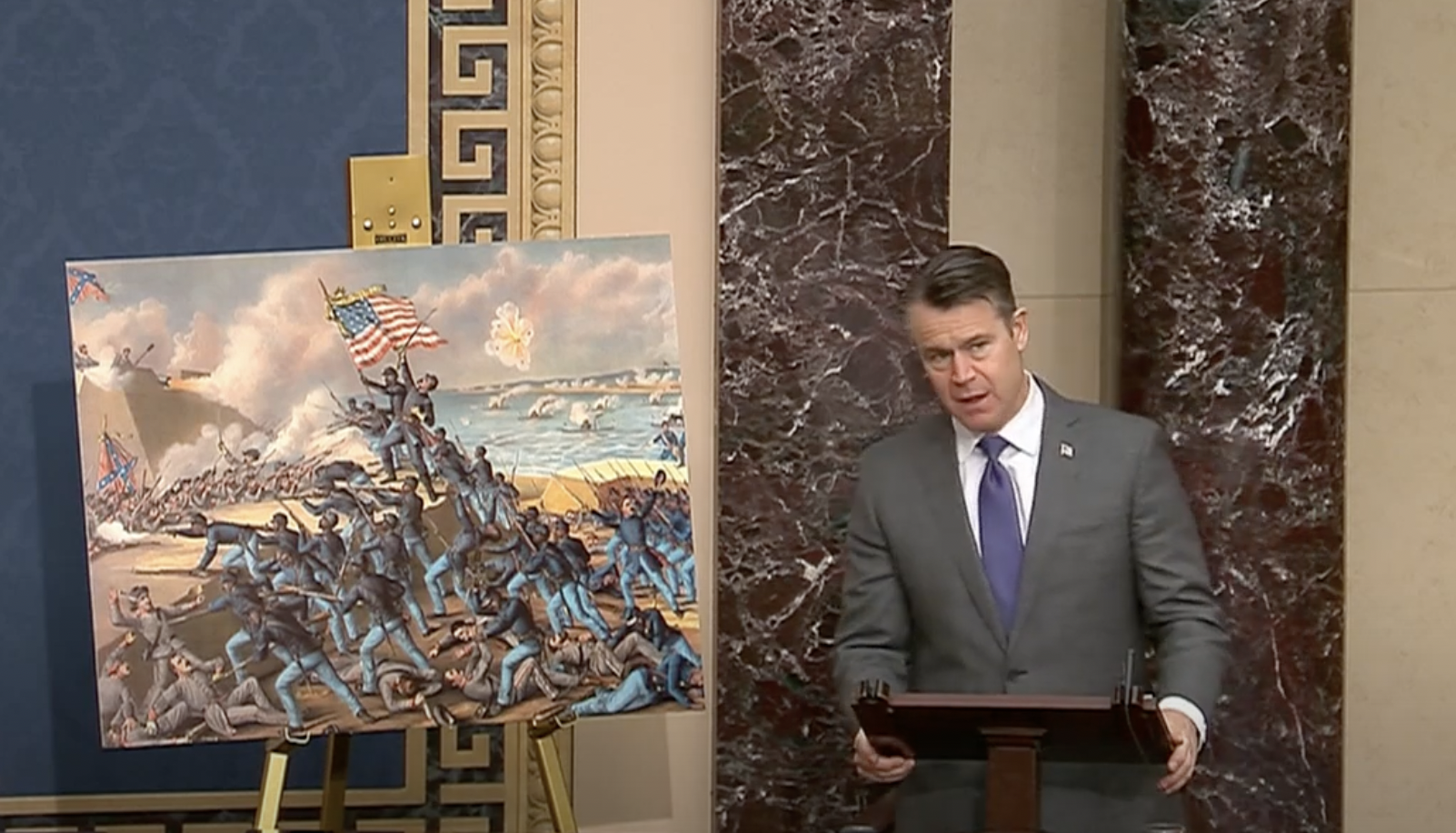VIDEO: Young Honors Hoosier Heroes in Memorial Day Remarks
**Click here or above to watch Senator Young’s floor speech.**
WASHINGTON – Ahead of Memorial Day, U.S. Senator Todd Young (R-Ind.) delivered remarks on the Senate floor and paid tribute to all of those who made the ultimate sacrifice in service to the United States of America.
Young spoke about the legacy of Hoosiers who served in our nation’s first all-Black regiment, the Massachusetts 54th Infantry.
“The reason we build monuments and memorials to the dead is so their examples live. We can draw inspiration from these heroes who did incredible things and fought for a more perfect Union and a world at peace,” said Senator Young.
To watch Senator Young’s full floor speech, click here.
Senator Young’s full remarks, as prepared for delivery:
Boston is perhaps a surprising place to begin a tribute to Indiana’s veterans on the occasion of Memorial Day.
But there, on Augustus Saint-Gaudens’ magnificent memorial to the 54th Massachusetts Regiment, their names are etched.
Maybe the coast of South Carolina is no less unexpected a place to continue that tribute, but there, on the shore, they fell.
The men who helped save our Union.
Who forever ended its greatest scourge.
Who fought for the Declaration of Independence, though they had been denied the inalienable rights it promised.
Seldom have American soldiers taken up arms and laid down their lives with such selflessness and yet so much at stake.
Many Hoosiers were among their ranks. Their names should be known, their stories told.
As Proverbs 10:7 says, “The Memory of the Just is Blessed…”
Abraham Lincoln described the Emancipation Proclamation as “an act of Justice.”
One of the greatest instruments of that justice was embedded at the end of the document.
It read: “That such persons of suitable condition, will be received into the armed service of the United States…”
“Such persons” were Black Americans.
Lincoln’s words spread fast and wide.
In Indianapolis, Pastor Willis Revels petitioned Governor Oliver Morton to raise a fighting force.
When the request was denied, Revels encouraged Hoosiers to join the first all-Black regiment forming near Boston.
Unable to fulfill its recruitment goals at home, the Massachusetts 54th Infantry sought and welcomed volunteers from across the Union.
Hoosiers answered the call.
They were men like George Broady, George Charles, Alfred Lewis, George McGowan.
They came from across Indiana, from places like Newport, Richmond, Lewisville, Centerville.
They were farmers, blacksmiths, barbers, laborers.
Soon enough, they were soldiers for the Republic.
There was no doubt of that when the 54th appeared on the dunes of Morris Island, South Carolina before twilight on July 18, 1863.
They were there to take Battery Wagner, a seemingly insurmountable obstacle between the Union Army and the port of Charleston.
When the 54th had marched to within 300 yards of the fort, shots streaked overhead.
They were ordered to the ground until the fire had passed. Then they rose.
They charged forward, through sand and marshy water, as the sun sank in the western sky.
As they reached the fort, Battery Wagner exploded with fire.
The 54th was razed, “like grass before the mower’s scythe” one Hoosier survivor wrote afterwards.
The regiment lost nearly 300 men that night, over 40 percent of its ranks. Fort Wagner remained in Confederate hands.
Among the dead were Hoosiers Thomas Ampey and John Wilson.
They did not simply fall for a good cause. Their bravery at Battery Wagner turned a tide.
It shattered prejudices about the supposed inferiority of Black soldiers, and debunked foolish notions about their ability or willingness to fight. Inspired by their example, additional Black regiments formed across the north.
By the end of 1863, Indiana had authorized the formation of the 28th United States Colored Troops…and Willis Revels was at work recruiting Hoosiers to fill its ranks.“Your country calls you,” he declared.
Initially over 500 men enrolled, forming six companies.
The gallant 28th fought during the Siege of Petersburg in Virginia, its men fell at the Battle of the Crater.
When the Union army marched into the fallen Confederate capital of Richmond in the spring of 1865, the 28th was there, bringing the rebellion to its knees and slavery to its end.
And they were present in Galveston, Texas, when General Order No 3 was issued on June 19, 1865 ending legalized slavery – an event we now celebrate as Juneteenth.
Over 1,500 Black Hoosiers served in the Civil War, in the Massachusetts 54th and 55th, the Indiana 28th, and across the Union Army.
As President Lincoln acknowledged, the bravery of Black soldiers, from Indiana and across the Union, helped preserve the Union.
Offering an appropriate tribute to the fallen on Memorial Day can be a difficult task.
How can we, after all, express sufficient thanks to those who died for us?
To paraphrase President Lincoln, “the world will little note, nor long remember what we say here.”
But it will never forget the sacrifice of the men who fought in the 54th Massachusetts or the 28th Indiana.
It took great courage for these Black Americans to believe in the goodness of this country, its people, and the promise of its founding.
The reason we build monuments and memorials to the dead is so their examples live.
We can draw inspiration from these heroes who did incredible things and fought for a more perfect Union and a world at peace.
I close where I began, in Boston.
There on the memorial to the 54th, the names of fallen Hoosiers Thomas Ampey and Elisha Burkett can be found. Their legacy lives on.
We remember these men and all who paid the ultimate price for our freedom on this Memorial Day.
